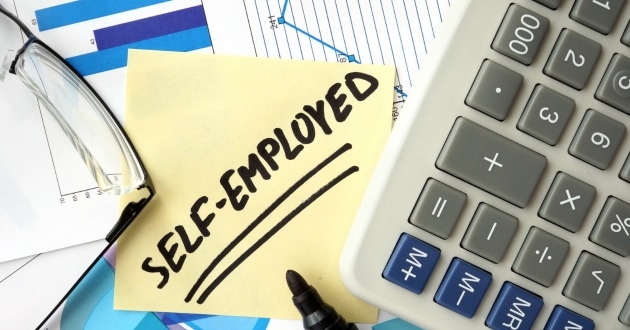Retirement planning for self-employed individuals presents unique challenges and opportunities. Without access to employer-sponsored retirement plans, self-employed professionals must take a proactive approach to ensure they build sufficient savings for their future.
One of the most effective strategies in retirement planning for self-employed is to take advantage of tax-advantaged accounts like the Solo 401(k) or SEP IRA. These accounts allow for higher contribution limits compared to traditional IRAs, providing an excellent opportunity to maximize savings.
Another important aspect of retirement planning for self-employed is to maintain a consistent savings habit. Without the automatic payroll deductions that come with traditional employment, it’s essential to set up regular contributions to retirement accounts.
Importance of Retirement Planning

Firstly, understanding the importance of retirement planning is crucial for self-employed individuals. Without a structured retirement plan, you may face financial instability in your later years. Therefore, it is essential to start planning early and consistently contribute to your retirement savings.
Benefits of Early Planning
Starting early allows you to take advantage of compound interest, which can significantly increase your retirement savings over time. Moreover, early planning helps you set realistic financial goals and adjust your savings strategy as needed.
Exploring the Best IRA Accounts for Self-Employed Individuals
When planning for retirement, self-employed individuals must consider various retirement account options to maximize their savings. One valuable resource for finding the best IRA accounts is understanding the features, benefits, and fees associated with each option.
By comparing different IRA providers, you can identify the accounts that offer the best combination of low fees, diverse investment options, and favorable terms. This allows you to create a retirement plan tailored to your specific financial situation and long-term goals, ensuring a secure and comfortable retirement.
Retirement Account Options for Self-Employed Individuals
When it comes to retirement planning for self-employed, there are several account options to consider. Each has its benefits and contribution limits, so it’s important to choose the one that best suits your financial situation and retirement goals.
1. SEP IRA (Retirement Planning for Self-Employed)
A Simplified Employee Pension (SEP) IRA is a popular choice for self-employed individuals due to its high contribution limits and simplicity. You can contribute up to 25% of your net earnings from self-employment, up to a maximum of $61,000 for 2024. Contributions are tax-deductible, and the investments grow tax-deferred until retirement.
2. Solo 401(k)
The Solo 401(k) is another excellent option, especially for those with higher income levels. It allows for both employee and employer contributions, significantly increasing the total contribution limit. For 2024, the combined limit is $66,000, with an additional $6,500 catch-up contribution if you are over 50.
3. SIMPLE IRA (Retirement Planning for Self-Employed)
The Savings Incentive Match Plan for Employees (SIMPLE) IRA is ideal for small business owners with up to 100 employees. It has lower contribution limits compared to SEP IRAs and Solo 401(k)s, but it is easier to set up and maintain. For 2024, the contribution limit is $14,000, with an additional $3,000 catch-up contribution for those over 50.
4. Roth IRA
Roth IRAs are funded with after-tax dollars, meaning contributions do not reduce your taxable income for the year. However, qualified withdrawals in retirement are tax-free, which can be beneficial if you expect to be in a higher tax bracket in the future. The contribution limit for 2024 is $6,000, with a $1,000 catch-up contribution for those over 50.
Retirement Planning Tools for Self-Employed Individuals
Effective retirement planning requires the right tools and resources, especially for self-employed individuals who don’t have access to employer-sponsored plans. One such valuable resource is Retirable, which offers personalized retirement planning services.
By using tools like Retirable, self-employed individuals can receive tailored advice, create a comprehensive retirement strategy, and manage their investments efficiently. This can help ensure that you are on the right track to achieving your retirement goals and maintaining financial stability in your later years.
Strategies for Maximizing Retirement Savings
To ensure a comfortable retirement, self-employed individuals should employ strategies to maximize their retirement savings. Here are some effective strategies:
1. Automate Contributions
Firstly, automating your contributions can help ensure that you consistently save for retirement. Set up automatic transfers from your checking account to your retirement account to make regular contributions without having to think about it.
2. Diversify Investments (Retirement Planning for Self-Employed)
Additionally, diversifying your investments can help spread risk and increase potential returns. Consider a mix of stocks, bonds, and other assets to build a robust retirement portfolio. This strategy can help protect your savings from market volatility.
3. Take Advantage of Tax Benefits
Furthermore, understanding and utilizing the tax benefits associated with retirement accounts can significantly enhance your savings. Contributions to SEP IRAs, Solo 401(k)s, and traditional IRAs are tax-deductible, reducing your taxable income for the year. Roth IRAs, on the other hand, offer tax-free withdrawals in retirement.
4. Review and Adjust Your Plan Regularly
Finally, regularly reviewing and adjusting your retirement plan is crucial to staying on track. Life circumstances and financial goals can change, so it’s important to reassess your plan periodically and make necessary adjustments to your contributions and investment strategy.
Common Questions About Retirement Planning for Self-Employed
1. How Much Should I Save for Retirement?
The amount you should save for retirement depends on your desired lifestyle and expected expenses in retirement. A common recommendation is to aim for saving 15-20% of your annual income.
2. Can I Contribute to More Than One Retirement Account?
Yes, you can contribute to multiple retirement accounts. However, the total contributions must stay within the IRS limits for each account type.
3. What If I Start Saving for Retirement Late?
If you start saving for retirement late, you can still catch up by maximizing your contributions and taking advantage of catch-up contributions if you are over 50. Additionally, consider delaying retirement to increase your savings and allow more time for your investments to grow.
4. Are There Penalties for Early Withdrawals?
Yes, early withdrawals from retirement accounts typically incur a 10% penalty in addition to regular income tax. However, there are some exceptions for specific situations, such as first-time home purchases and certain medical expenses.
5. How Can I Estimate My Retirement Needs?
Estimating your retirement needs involves calculating your expected expenses and determining how much you need to save to cover those costs. Online retirement calculators can help provide a rough estimate based on your current savings, expected retirement age, and desired retirement lifestyle.
6. Can I Hire a Financial Advisor for Retirement Planning?
Absolutely. A financial advisor can provide personalized advice and help you develop a comprehensive retirement plan. They can also assist with investment decisions, tax planning, and adjusting your strategy as needed.
Conclusion in Retirement Planning for Self-Employed
In conclusion, retirement planning for self-employed individuals requires careful consideration and proactive strategies. By understanding the different retirement account options, maximizing contributions, diversifying investments, and regularly reviewing your plan, you can build a secure financial future. Start planning today to ensure a comfortable and financially stable retirement.



